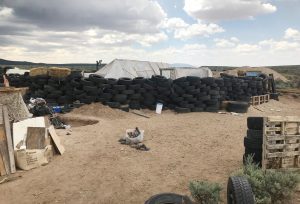
By Gabriella Borter and Joseph Ax
(Reuters) – A 13-year-old girl’s escape from a rural home where she was held captive for three months by a Wisconsin man charged with murdering her parents helped break the case and she should be treated as a hero, the local sheriff said on Friday.
Jayme Closs is with her aunt after her rescue on Thursday and has been reunited with the rest of her family and her dog, Barron County Sheriff Chris Fitzgerald told reporters.
Thousands of volunteers and hundreds of law enforcement officers had searched the small town of Barron after Closs’ parents were found shot dead in their home in October, their front door blown open with a shotgun, their daughter gone.
Closs was targeted by suspected kidnapper Jake Patterson, 21, who carefully planned her parents’ murder, even shaving his head to avoid leaving forensic evidence at the crime scene, Fitzgerald told reporters.
“Jayme was the target,” said Fitzgerald. “The suspect had specific intentions to kidnap Jayme and went to great lengths to prepare to take her.”
Relying on what Fitzgerald called “the will of a kid to survive,” a disheveled Closs escaped the house in the tiny town of Gordon where she had been held captive, about 60 miles (100 km) north of her home in Barron. Her captor was not at home when she managed to flee, Fitzgerald said. She was found by a woman walking her dog on Thursday afternoon.
“Jayme is the hero in this case. She’s the one who helped us break this case,” Fitzgerald told reporters.
Closs spoke to investigators on Friday after spending a night in the hospital for evaluation. Authorities did not offer any details about the conditions of her captivity or how she had managed to escape.
‘LOOKING FOR HER’
Less than 15 minutes after Closs’ rescue, Patterson was taken into custody after police pulled him over, based on Closs’ description of his vehicle.
“The suspect was out looking for her when law enforcement made contact with him,” Fitzgerald told a news conference, adding police were not seeking any other suspects in the case at this time.
Police are now trying to work out why Patterson targeted Closs.
“We don’t believe there was a social media connection and are determining how he became aware of Jayme,” Fitzgerald said. “Nothing, in this case, shows the suspect knew anyone at the Closs home, or at any time had contact with anyone in the Closs family.”
Patterson, an unemployed resident of Gordon, was charged on Friday with kidnapping and with murdering James and Denise Closs with a shotgun. Their bodies were discovered on Oct. 15.
He was being held in the Barron County jail, and it was not yet clear whether he had a lawyer. He faces an initial court hearing on Monday.
Authorities have released few details about Patterson, who has no previous criminal record in Wisconsin.
Fitzgerald, the Barron County Sheriff, said Patterson grew up in Gordon and attended high school in the area.
The president of the Jennie-O Turkey store in Barron, where James and Denise Closs had worked for decades, said Patterson had been an employee there for a single day three years ago. He quit the next day, saying he was moving, Steve Lykken said.
“We are still mourning the loss of longtime Jennie-O family members Jim and Denise, but our entire team is celebrating with the community, and the world, that Jayme has been found,” Lykken said.
The superintendent of the local school district, Jean Serum, described Patterson as a nice kid and member of his high school’s quiz bowl team. He graduated in 2015.
INNER STRENGTH
About 350 people under the age of 21 are kidnapped by strangers in the United States each year, according to FBI data.
Those that survive months in captivity need inner strength and a great deal of luck, according to survivors and experts who have worked with such victims.
Elizabeth Smart, who was held captive for nine months as a teenager after her 2002 abduction in Utah, posted a photo of Closs on Instagram, praising the “miracle” that she had been found.
“No matter what may unfold in her story let’s all try to remember that this young woman has SURVIVED and whatever other details may surface the most important will still remain that she is alive,” Smart wrote.
(Reporting by Joseph Ax and Gabriella Borter in New York; Additional reporting by Rich McKay in Atlanta and Andrew Hay in New Mexico; Editing by Bill Tarrant and Sandra Maler)












